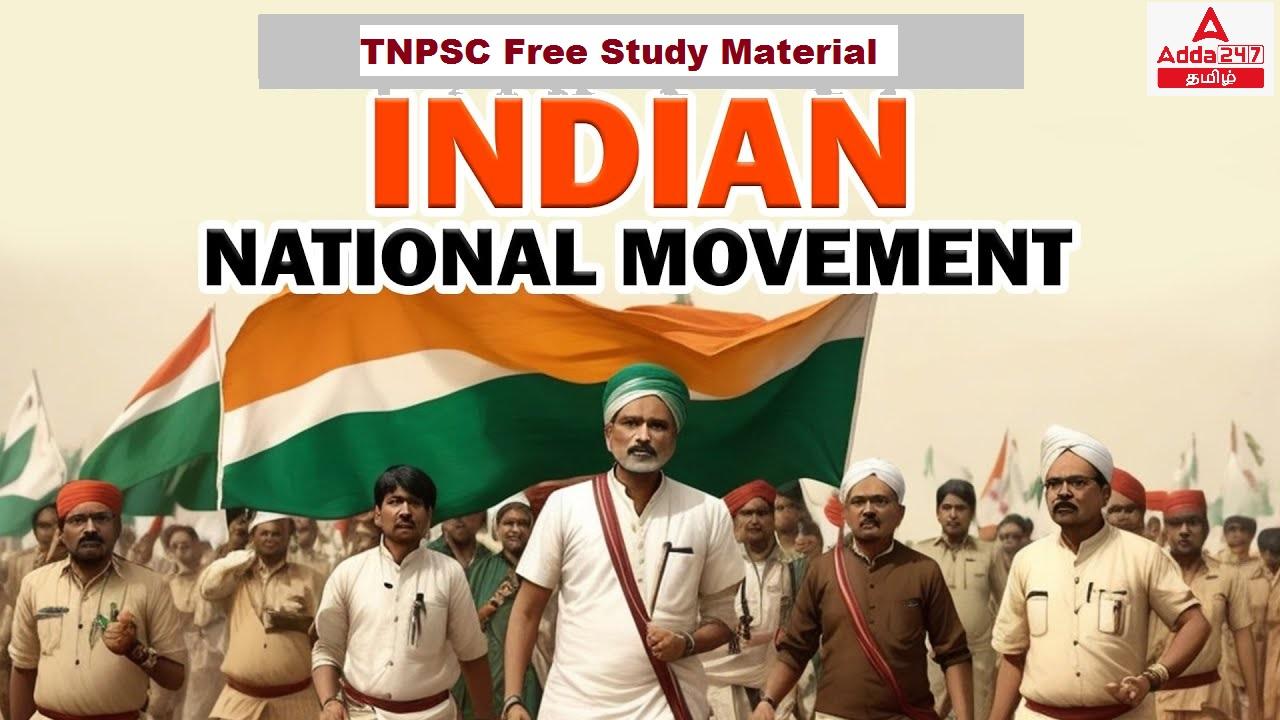இந்தக் கட்டுரையில், TNPSC குரூப் 1, குரூப் 2, குரூப் 2A, குரூப் 4 மாநிலப் போட்டித் தேர்வுகளான TNUSRB, TRB, TET, TNEB போன்றவற்றுக்கான முறைகள் இலவசக் குறிப்புகளைப் பெறுவீர்கள்.தேர்வுக்கு தயாராவோர் இங்குள்ள பாடக்குறிப்புகளை படித்து பயன்பெற வாழ்த்துகிறோம்.
Karachi Session 1931
Introduction
The Indian National Congress mobilised the masses for non-violent struggles, in contrast
to the violent actions of revolutionaries.
The Congress under the leadership of Gandhi gave priority to the problems of peasants.
In the context of great agrarian distress, deepened by world-wide economic depression,
the Congress mobilised the peasantry.
The Congress adopted a no-rent and no-tax campaign as a part of its civil disobedience
programme.
Under the pressure of Great Depression, socio-economic demands were sharply
articulated in its Karachi Session of the Indian National Congress.
A new shape of the freedom struggle
Peasants were organised by Kisan Sabhas
Industrial workers were organized by the trade unions
During the 1930s the Indian National Congress had become a mass party.
The Congress leadership, which was now taking a left turn under Nehru’s leadership,
began to talk about an egalitarian society based on social and economic justice.
Karachi Congress Session
March 29, 1931- A special session of the Congress was held at Karachi to endorse the
Gandhi-Irwin Pact.
President – Sardar Vallabhai patel
The session was held six days before Bhagat Singh, Sukhdev and Rajguru’s execution.
(March 23, 1931).
Throughout Gandhi route to Karachi, he was greeted with black flag demonstrations by
the Punjab Naujawan Bharat Sabha, in protest against his failure to secure commutation
of the death sentence for Bhagat and his comrades.
Congress Resolutions at Karachi
While disapproving and dissociating itself from political violence, the Congress admired
the ‘bravery’ and ‘sacrifice’ of the three martyrs.
The Delhi Pact or Gandhi-Irwin Pact was endorsed.
The goal of Purna swaraj was reiterated.
Two resolutions were adopted – Fundamental Rights and the other on National
Economic Programme
The Resolution on Fundamental Rights guaranteed
Free speech and free press
Right to form associations
Right to assemble
Universal adult franchise
Equal legal rights irrespective of caste, creed and sex
Neutrality of state in religious matters
Free and compulsory primary education
Protection to culture, language, script of minorities and linguistic groups
The Resolution on National Economic Programme includes
Substantial reduction in rent and revenue in the case of landholders and peasants
Exemption from rent for uneconomic holdings relief from agricultural indebtedness
Control of usury
Better conditions of work including a living wage
Limited hours of work and protection of women workers in the industrial sector
Right of workers and peasants to form unions
State ownership and control of key industries, mines and means of transport
Great Depression & Its Impact on India
The Great Depression was a severe and prolonged economic crisis which lasted for
about a decade from 1929.
The slowdown of the economic activities, especially industrial production led to crises
like lockouts, wage cut, unemployment and starvation.
It began in North America and affected Europe and all the industrial centres in the
world.
As the world was integrated by the colonial order in its economic sphere, developments
in one part of the world affected other parts as well.
The crash in the Wall Street, where the American Stock Exchange was located triggered
an economic depression of great magnitude.
Depression in India
Depression affected both industrial and agrarian sectors.
Labour unrest broke out in industrial centres such as Bombay, Calcutta, Kanpur, United
Province and Madras against wage cuts, lay-offs and for the betterment of living
conditions.
In the agriculture sector, prices of the agricultural products, which depended on export
markets like jute and raw cotton fell steeply.
The depression brought down the value of Indian exports from Rs. 311 crores in
1929–1930 to Rs 132 crores in 1932–33.
Therefore, the 1930s witnessed the emergence of the Kisan Sabhas which fought for
rent reduction, relief from debt traps and even for the abolition of Zamindari.
Positive Impact of Depression
The only positive impact was on the Indian industrial sector that could use the
availability of land at reduced prices and labour at cheap wage rates.
The weakening ties with Britain and other capitalist countries created a condition where
growth was recorded in some of the Indian industries.
Yet only the industries which fed the local consumption thrived.
Industrial Development in India
The British trade policy took a heavy toll on the indigenous industry.
Industrialization of India was not part of British policy. Like other colonies British also
treated India as a raw material procurement area and a market for their finished goods.
Despite this, industrial expansion took place in India, first during the course of the First
World War and then during the Great Depression.
Cowasjee Nanabhoy Davar (1815–73) – The first Indian to start a cotton mill. He was a
Parsi, in Bombay in 1854. This was known as the Bombay Spinning and Weaving
Company.
The city’s leading traders mostly Parsis contributed to this endeavour
The American Civil War (1861–65) was a boon to the cotton farmers. But after the Civil
War when Britain continued to import cotton from America, Indian cotton cultivators
came to grief. But Europeans started textile mills in India, taking advantage of the
cheapness of cotton available.
Ahmedabad textiles mills – Established by Indian entrepreneurs
Both Ahmedabad and Bombay became prominent centres of cotton mills.
By 1914, there were 129 spinning, weaving and other cotton mills within Bombay
presidency.
Between 1875–76 and 1913- 14, the number of cotton textile mills in India increased
from 47 to 271.
*************************************************************************
| Adda247 TamilNadu Home page | Click here |
| Official Website=Adda247 | Click here |








